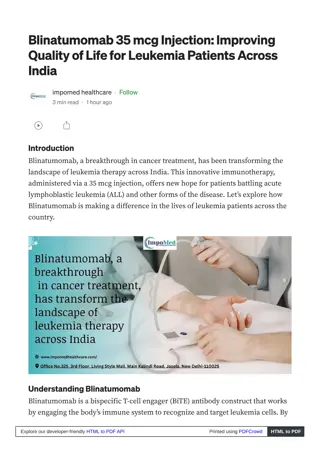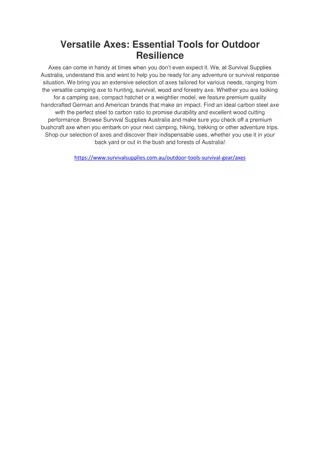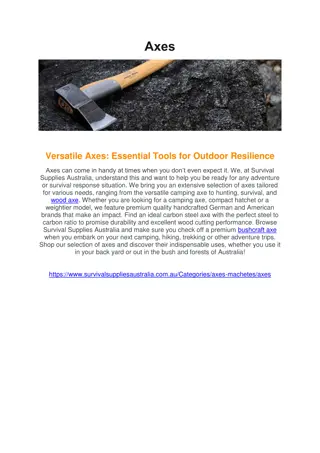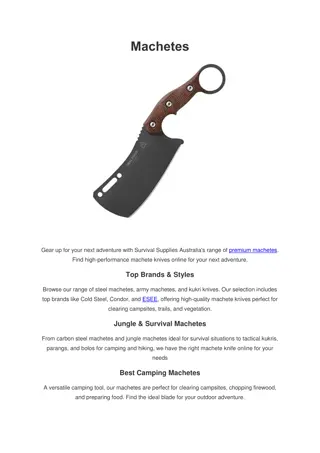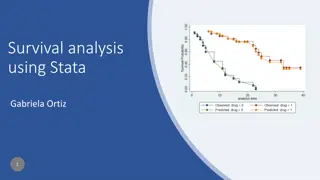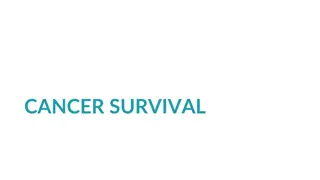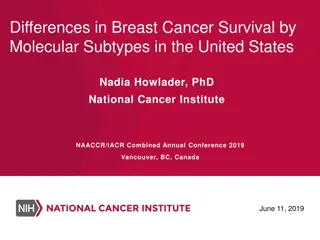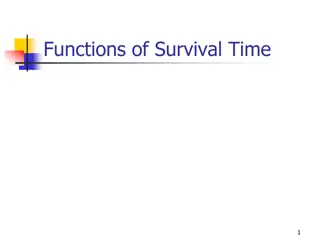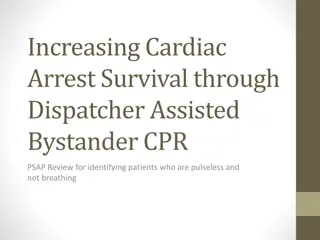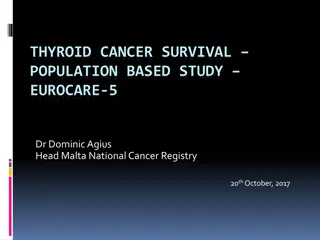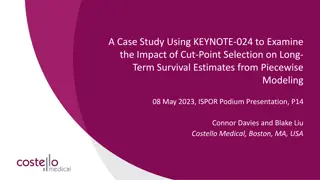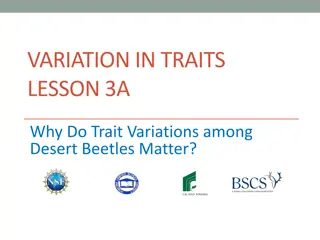The Impact of the Changes to the SABS: Strategies for Survival
This content delves into the repercussions of modifications to the SABS framework and offers insightful strategies for adaptation in response to these changes. Authors Brian Cameron and Ryan Murray provide a comprehensive analysis of the shifting landscape, guiding readers on navigating the new terrain effectively.
Download Presentation

Please find below an Image/Link to download the presentation.
The content on the website is provided AS IS for your information and personal use only. It may not be sold, licensed, or shared on other websites without obtaining consent from the author. Download presentation by click this link. If you encounter any issues during the download, it is possible that the publisher has removed the file from their server.
E N D
Presentation Transcript
The Impact of the Changes to the SABS: Strategies for Survival Brian Cameron and Ryan Murray
All accident benefit changes effective June 1, 2016 Ontario Regulation 251/15 released August 27, 2015
Reduction in total benefits for non- catastrophic claims Accidents on and after June 1, 2016. New total maximum medical/rehabilitation and attendant care = $65,000. Previously $86,000. Duration reduced from 10 years to 5 years for adults. Age 28 for children. $65,000 can be spent on either AC or MR ($3k per month AC cap). - - - -
Reduction in Non-Earner Benefits Eligibility for non earner benefits reduced from life to a maximum duration of 2 years (four week waiting period). - Maximum $18,500 over their lifetime ($185 per week for 2 years, other than during the first four weeks) instead of a lifetime of access. -
Reduction in Catastrophic Benefits Currently $1mm for AC and $1mm for MR. As of June 1, 2016 total of $1mm for both combined over lifetime. - Changes only apply to accidents on or after June 1, 2016. -
Narrowed CAT definition - Introduction of new tests - Elimination of GCS - Effect is to create delay, confusion and uncertainty. - Dramatically reduce the number of insured who are CAT.
GCS Eliminated Created bright white line allowing immediate access to benefits Tenuous relationship to outcome/need - - -
Paraplegia or Tetraplegia -Will now be defined by the insured permanent grade on the ASIA Impairment Scale (American Spinal Injury Association)
Paraplegia or Tetraplegia Grade A Definition Complete. No sensory or motor function is preserved in the sacral segments S4-S5 Incomplete. Sensory but no motor function is preserved below the neurological level and includes the sacral segments S4 S5 Incomplete. Motor function is preserved below the neurological level, and more than half of key muscles below the neurological level have a muscle grade less than 3 (Grades -02). Incomplete. Motor function is preserved below the neurological level, and at least half of key muscles below he neurological level have a muscle grade greater than or equal to 3. Normal. Sensory and motor functions are normal. B Included C D E
Paraplegia or Tetraplegia -ASIA D qualifies in 1 of 3 ways: 1. Mobility (indoors and outdoors, on even surface) CAT -If can walk (aided) a distance of up to 10 meters on an even indoor surface??
Paraplegia or Tetraplegia 2. Insured requires urological surgical diversion, an implanted device or catheterization to manage urological impairment. 3. Insured requires a bowel routine, a surgical diversion or an implanted device to manage anorectal function.
Mobility impairment (non spinal cord) (1)2. Severe impairment of ambulatory mobility or use of an arm, or amputation that meets the following criteria: i. Trans-tibial or higher amputation of a leg. ii. Amputation of an arm or another impairment causing the total and permanent loss of use of an arm.
Mobility impairment (non spinal cord) iii. Mobility (indoors and outdoors, on even surface) CAT - If can walk (aided) a distance of up to 10 meters on an even indoor surface??
Blindness (1) 3. Loss of vision of both eyes that meets the following criteria: i. Even with the use of corrective lenses or medication, A. Visual acuity in both eyes is 20/200 (6/60) or less as measured by the Snellen Chart or an equivalent chart, or B. The greatest diameter of the field of vision in both eyes is 20 degrees or less. ii. The loss of vision is not attributable to non-organic causes.
Adult Traumatic Brain Injury (1)4. If the insured person was 18 years of age or older at the time of the accident, a traumatic brain injury that meets the following criteria: The injury shows positive findings on a computerized axial tomography scan, a magnetic resonance imaging or any other medically recognized brain diagnostic technology indicating intracranial pathology that is a result of the accident, including, but not limited to, intracranial contusions or haemorrhages, diffuse axonal injury, cerebral edema, midline shift or pneumocephaly. i.
Adult Traumatic Brain Injury When assessed in accordance with Wilson J., Pettigrew, L. and Teasdale, G., Structured Interviews for the Glasgow Outcome Scale and the Extended Glasgow Outcome Scale and the Extended Glasgow Outcome Scale: Guidelines for Their Use, Journal of Neurotrauma, Volume 15, Number 8, 1998, the Injury results in a rating of, ii.
Adult Traumatic Brain Injury A. Vegetative State (VS or VS*), one month or more after the accident, B. Upper Severe Disability (Upper SD or Upper SD*) or Lower Severe Disability (Lower SD or Lower SD*, six months or more after the accident, or C. Lower Moderate Disability (Lower MD or Lower MD*), one year or more after the accident.
Adult Traumatic Brain Injury - The Glasgow Outcome Scale (GOS) is a global scale for functional outcome that rates a patient status into one of five categories: Dead, Vegetative State, Severe Disability, Moderate Disability or Good Recovery. The Extended GOS (GOSE) provides more detailed categorization into eight categories by subdividing the categories into lower and upper categories.
Glasgow Outcome Scale Extended* Category GOSE Descriptor Key Features 1 Dead D 2 Vegetative State VS Unable to obey commands or say words 3 Severe Disability - Lower SD - Needs frequent help or someone to be around most of the time 4 Severe Disability Upper SD + Does not need frequent help able to be alone at home for up to 8 hrs. Not able to shop without assistance Not able to travel locally without assistance 5 Moderate Disability Lower MD - Not able to work, or only in a sheltered or non-competitive position Unable to participate (or, rarely if even) in regular social and leisure activities outside home Constant and intolerable (daily) disruption or family relationships or friendships due to psychological problems 6 Moderate Disability Upper MD + Able to work or study but at a reduced capacity Participates much less (less than half as often) in regular social and leisure activities outside home Frequent but tolerable (once per week) disruption of family relationships or friendships due to psychological problems 7 Good Recovery Lower GR - Participates at least half as often as before in regular social and leisure activities outside home Occasional disruption of family relationships or friendships due to psychological problems Other problems relating to the injury (headache, dizziness, tiredness, sensory sensitivity, slowness, memory failures, concentration problems) affect daily life 8 Good Recovery - Upper GR + Able to work to previous capacity Able to resume regular social and leisure activities outside home No psychological problems resulting in ongoing family disruption or disruption to friendships
Paediatric Brain Injury -Requires 1 of: 1. Insured is accepted for admission on an in-patient basis to a public hospital with positive findings on imaging. 2. Insured is accepted for admission to an in-patient neuro rehab paediatric program. 3. Meets the KOSCHI (King s Outcome Scale for Childhood Head Injury) Vegetative after 1 month.
Paediatric Brain Injury 4. Meets the KOSCHI Severe Disability after 6 months
Paediatric Brain Injury 5. Nine months or more after the accident, the insured person s level of function remains seriously impaired such that the insured person is not age-appropriately independent and requires in-person supervision or assistance for physical, cognitive or behavioural impairments for the majority of the insured person s waking day.
55% Whole Person Impairment (WPI) -Continue to combine physical and mental/behavioural impairments. -Excludes traumatic brain injury. -Utilize the AMA Guides to the Evaluation of Permanent Impairment 6th edition for rating.
55% Whole Person Impairment (WPI) -Utilize the Guides 4th edition for combining scores. -Effect is to dramatically reduce % rating for mental/behavioural impairments. -Must wait 2 years unless will obviously always be CAT.
Psychiatric Impairment -Requires 3 Class 4 Marked Impairments of 4 areas of function. - Impairment levels significantly impede useful functioning .
Psychiatric Impairment -Areas of function assessed: 1. Activities of Daily Living. 2. Social functioning. 3. Concentration, persistence and pace (ability to focus attention to permit timely completion of tasks in a worklike setting). 4. Repeated failure to adapt to stressful circumstances (in work or worklike settings). -Must wait 2 years unless will always be 3 Class 4 Impairments.
Insureds no longer have right to sue AB insurers in court - As of April 1, 2016 elimination of FSCO arbitrations and mediations. - Also as of April 1, 2016 elimination of the right to sue AB insurers in court. - New LAT system.
Strategies - Work with OT and other professionals to create detailed reports to document the nature and extent of change in function. Will be very important in proving CAT. -Access publicly funded services and resources to supplement accident benefits (e.g. March of Dimes, CCAC, OHIP).
Ten Dos and Donts of Expert Report Writing Ryan A. Murray
What is an expert report? - Author expresses an opinion within his or her area of expertise. - A true expert is not an advocate.
#1 -Provide comprehensive details of your expertise
#2 - Set out clearly your process for reaching your conclusions
#3 - Provide a complete and accurate history and review of documentation
#4 - Be absolutely certain the pre-morbid history is complete and unbiased
#5 - Explain your differential diagnosis and how you reached your diagnosis
#6 Use legally helpful language Helpful: Likely Probable Not Helpful: Possible Might May
#7 - If not the sole cause, explain how the trauma made a material contribution to the impairments
#8 - Give a clear opinion on prognosis
#9 - Explain impairments with examples of impact on education, income, care, etc.
#10 - Do not be an advocate!
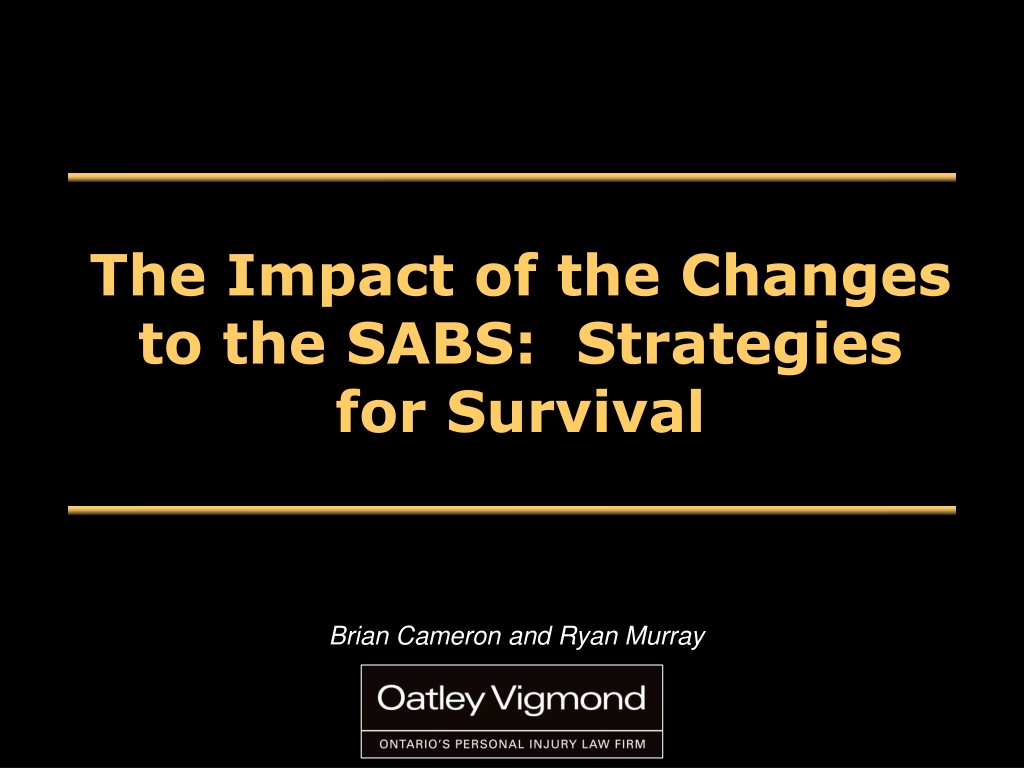
 undefined
undefined






